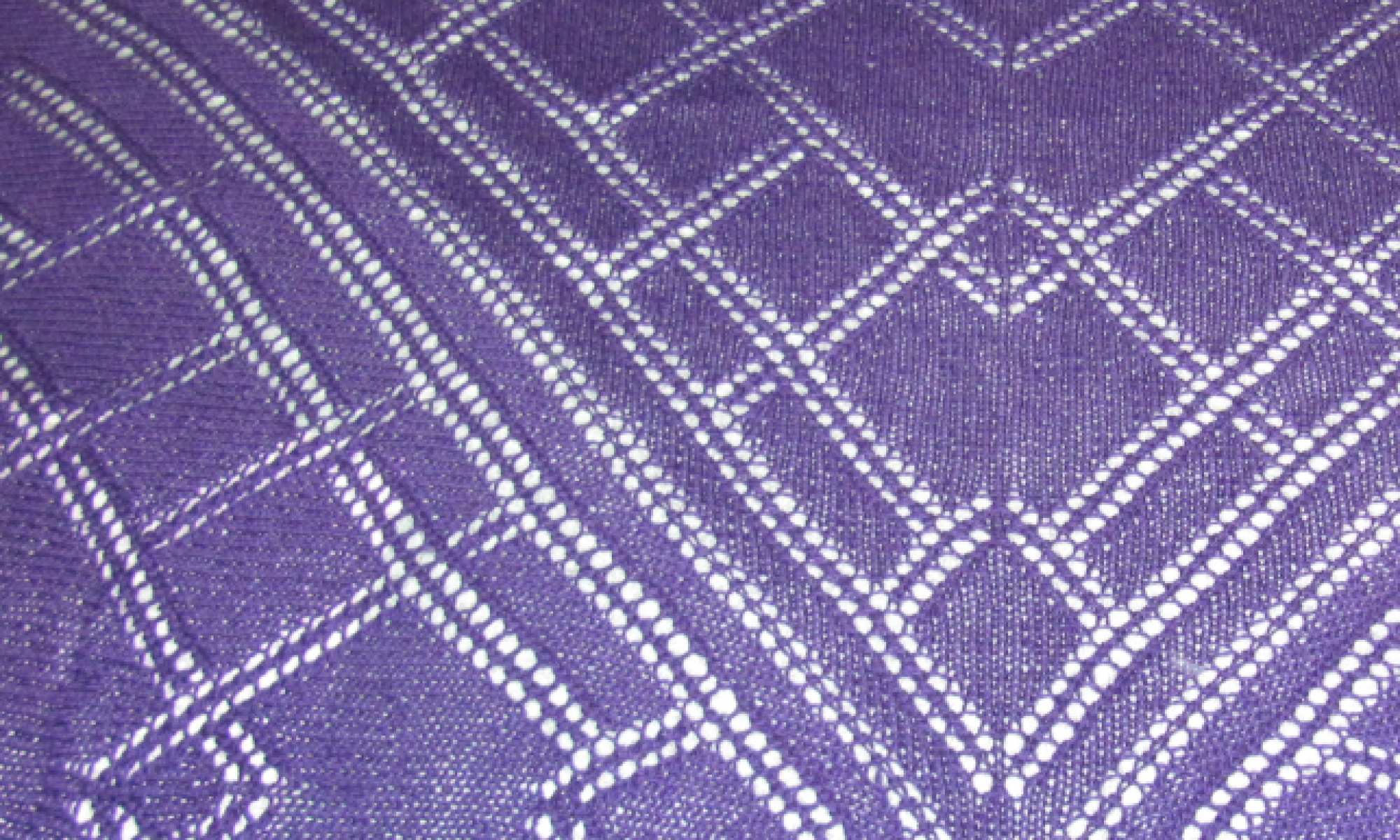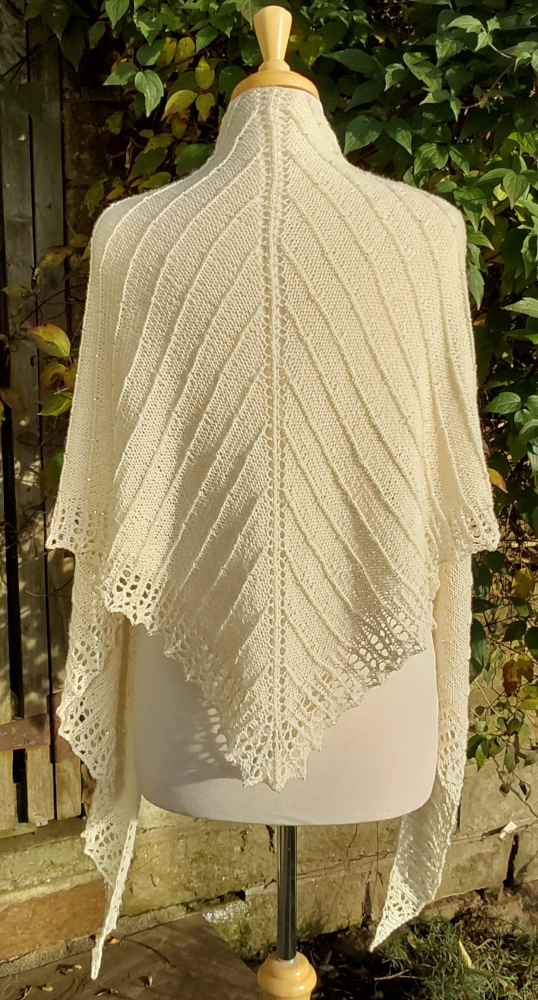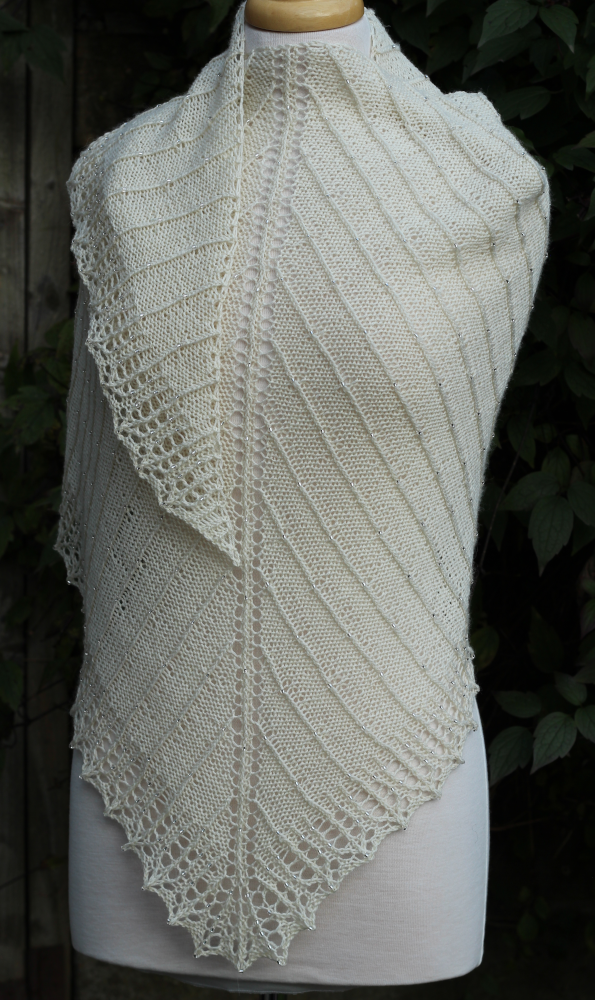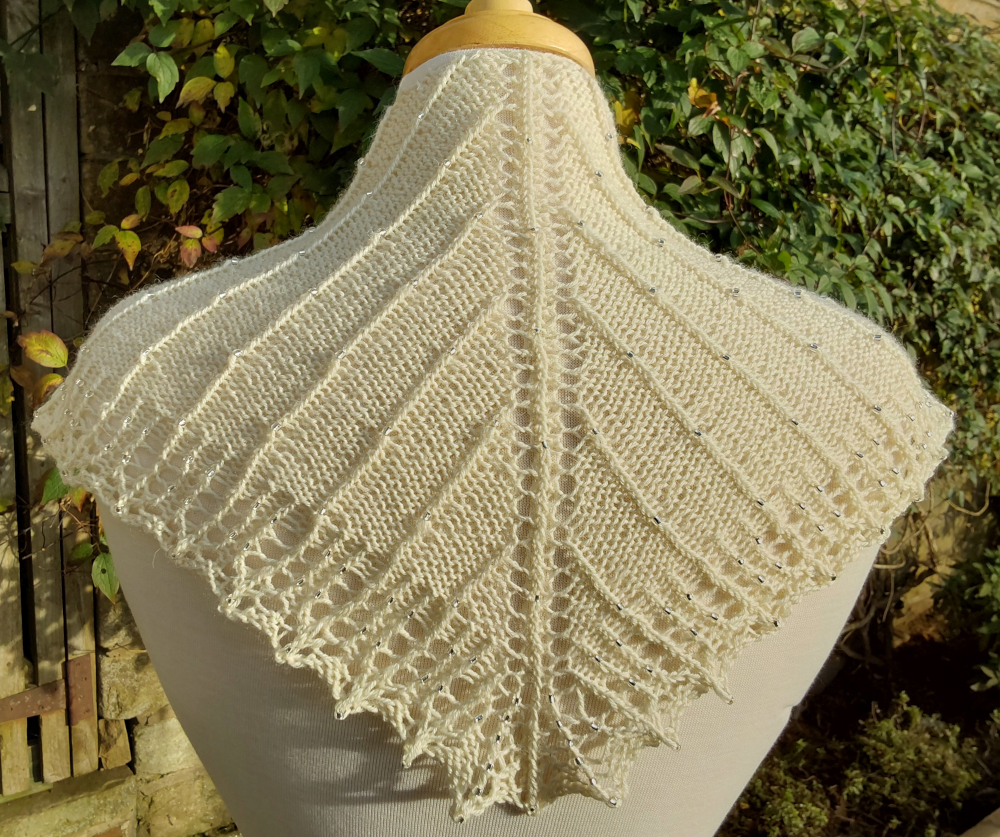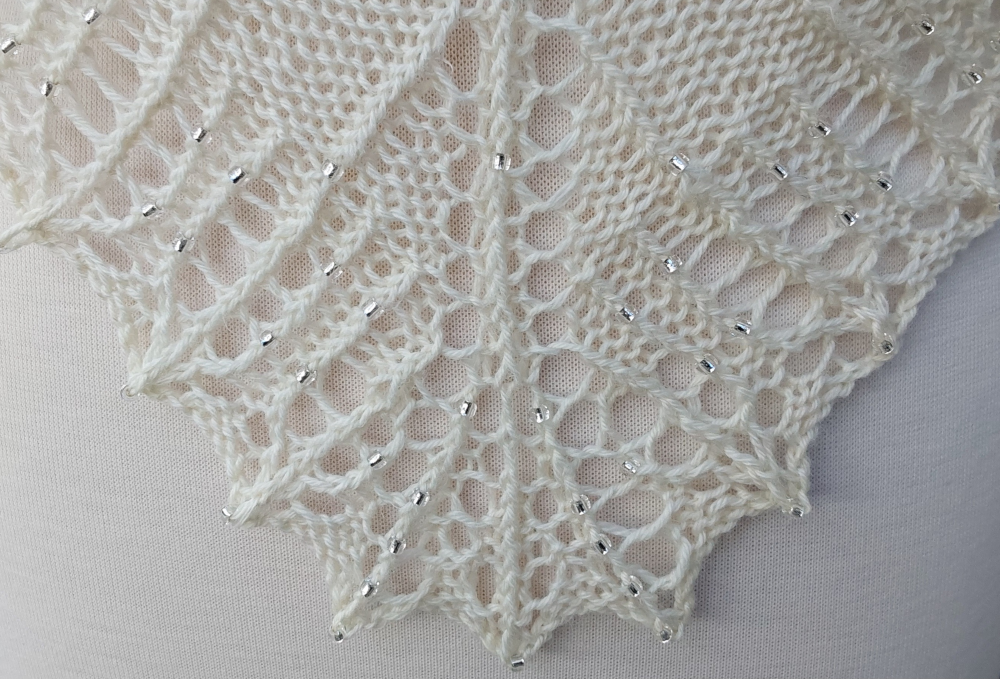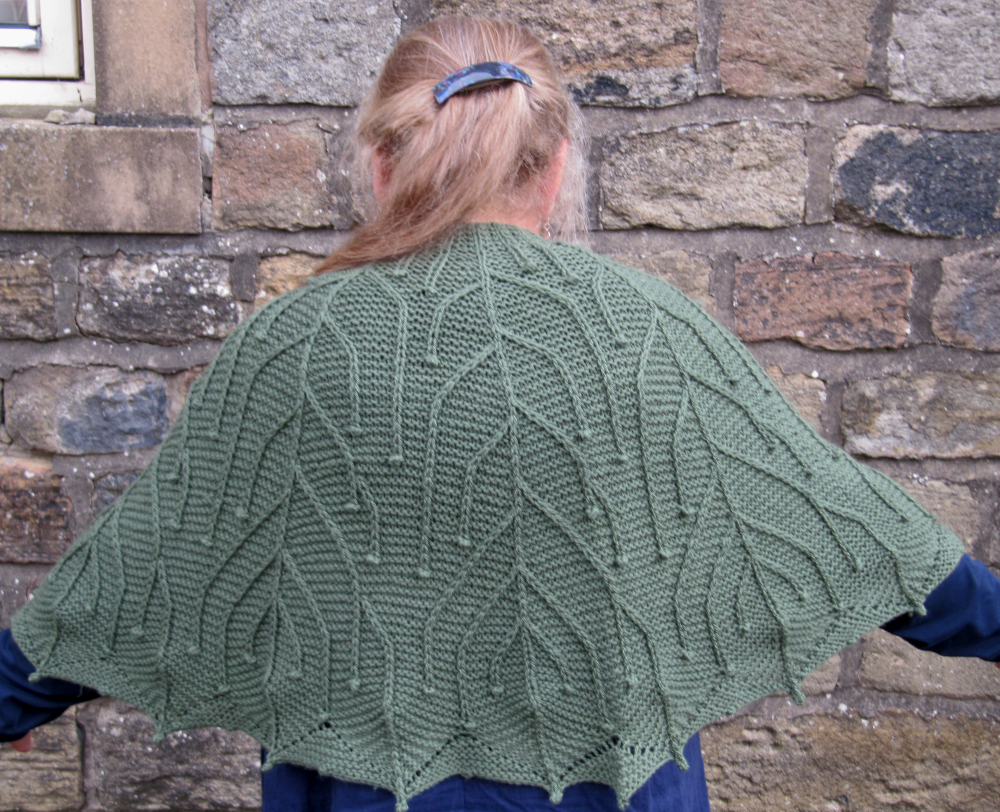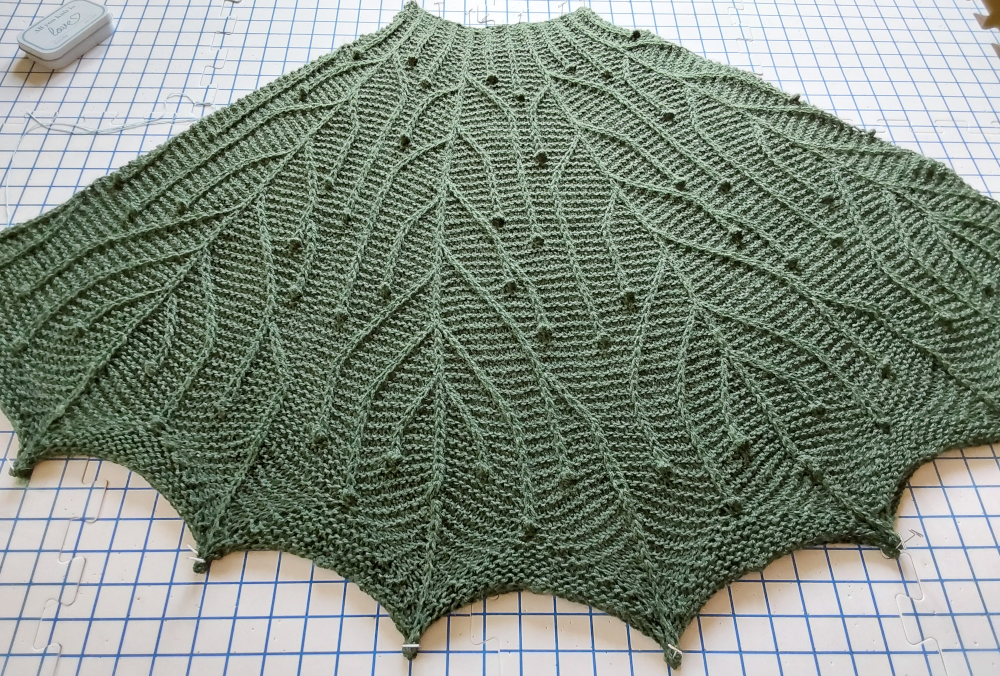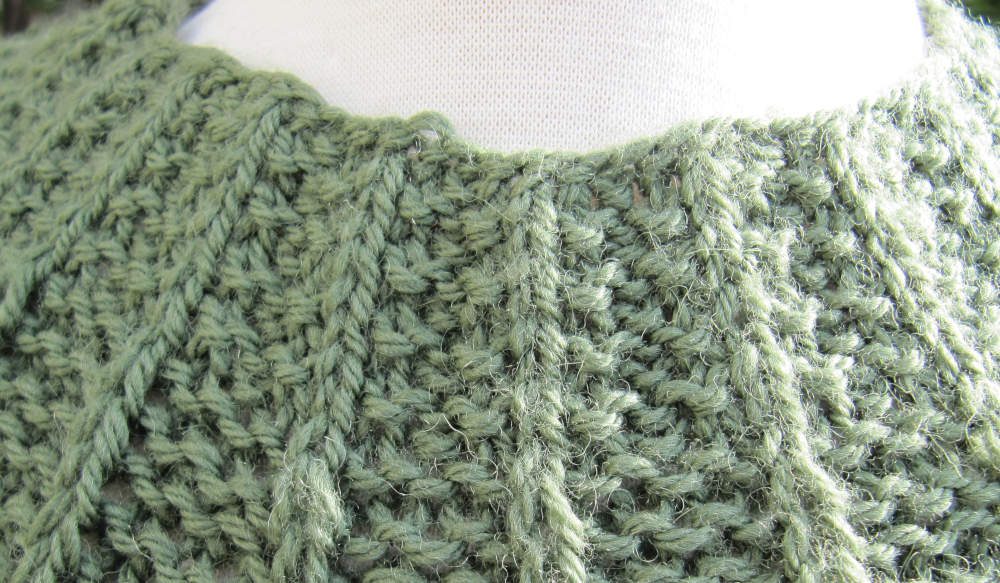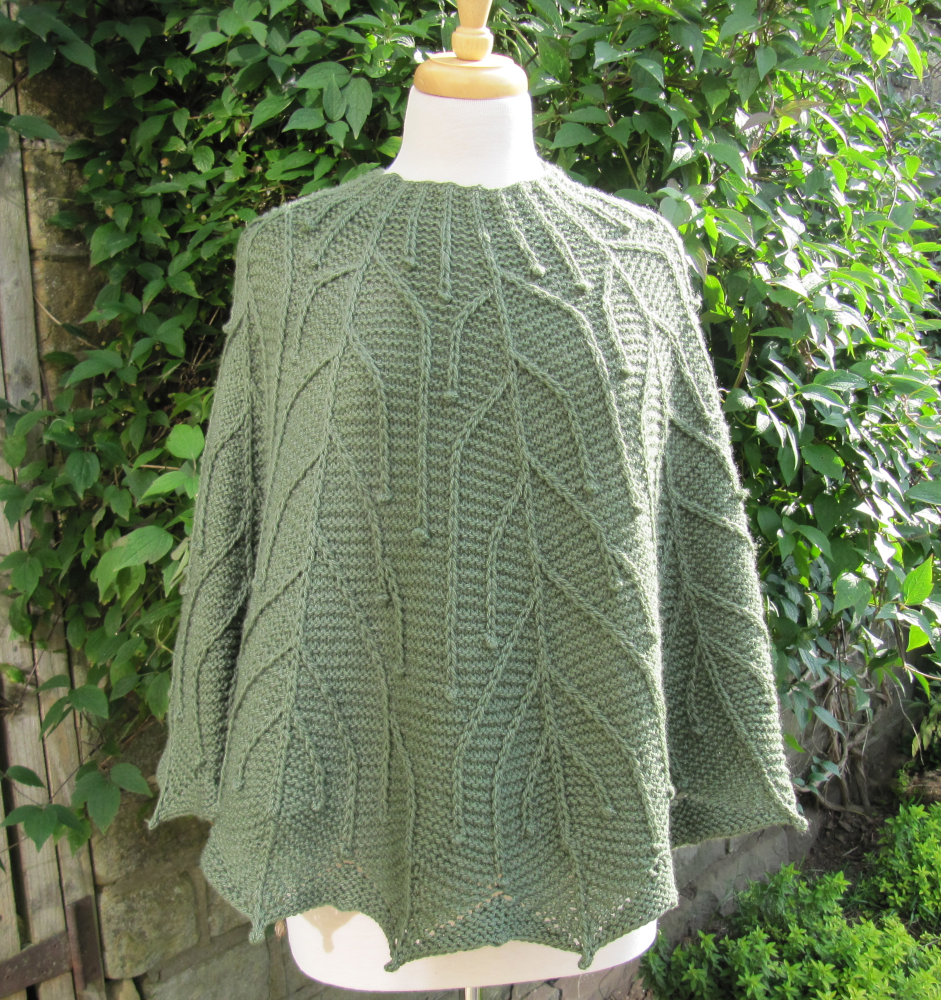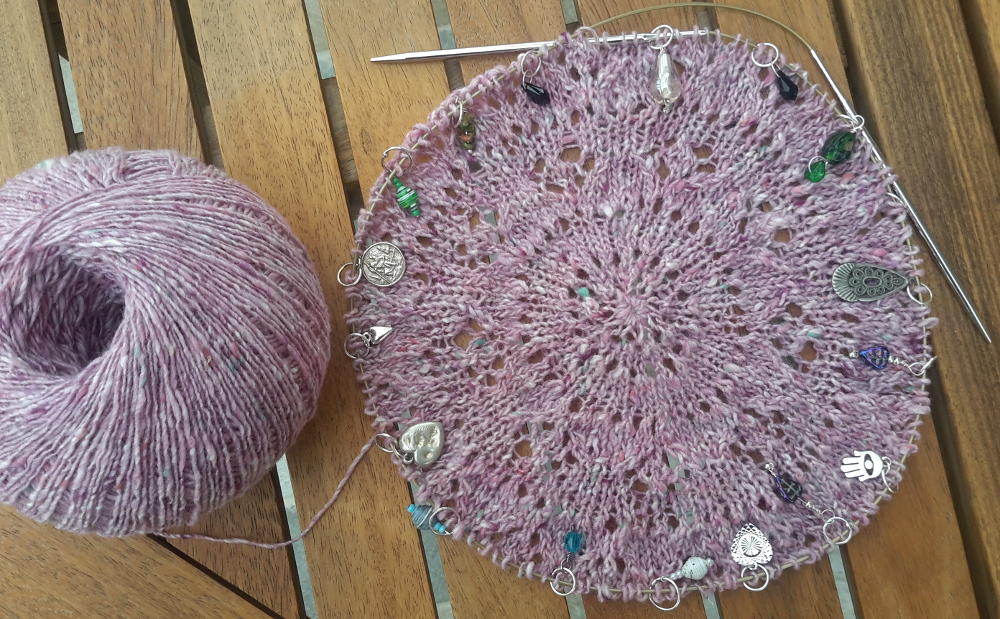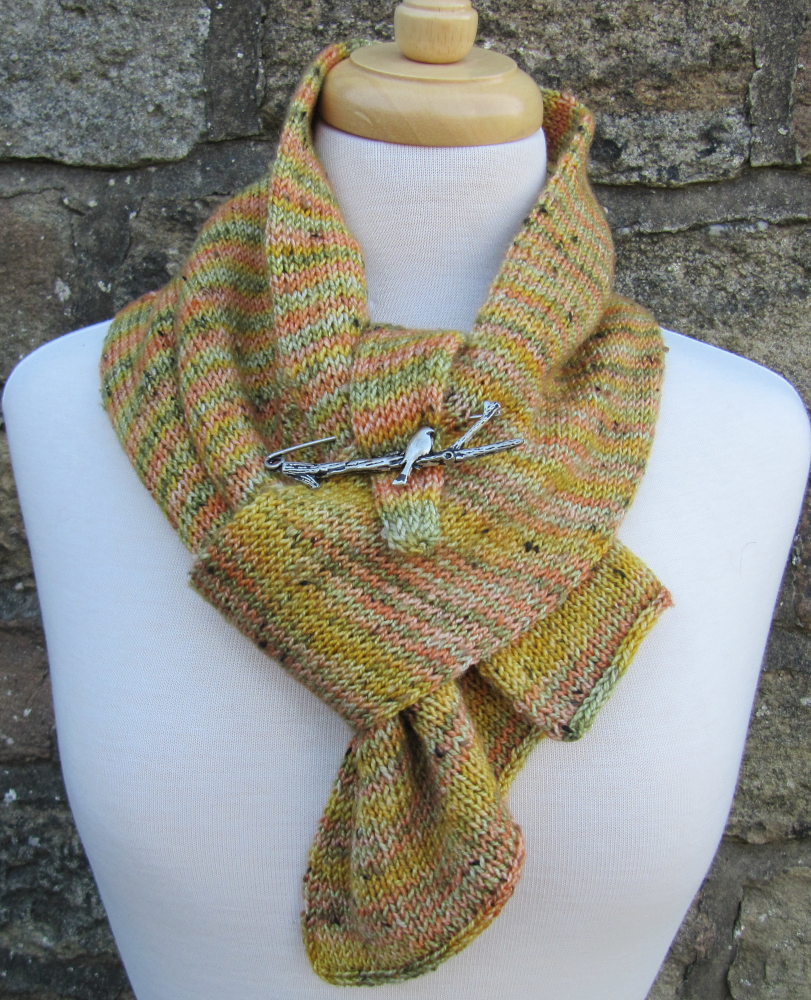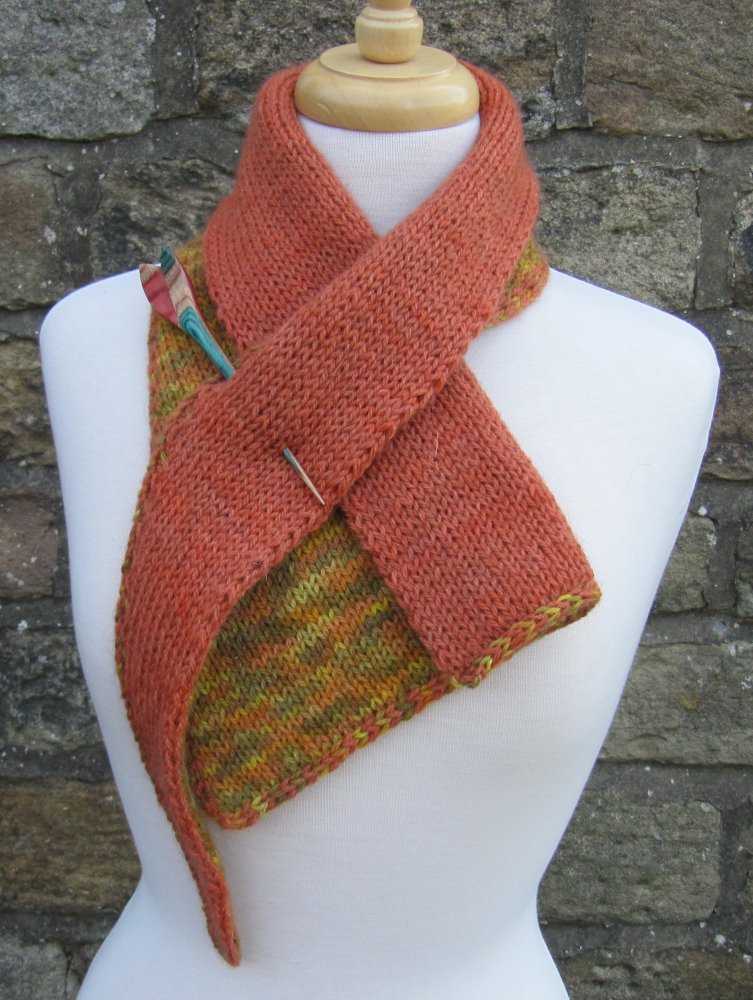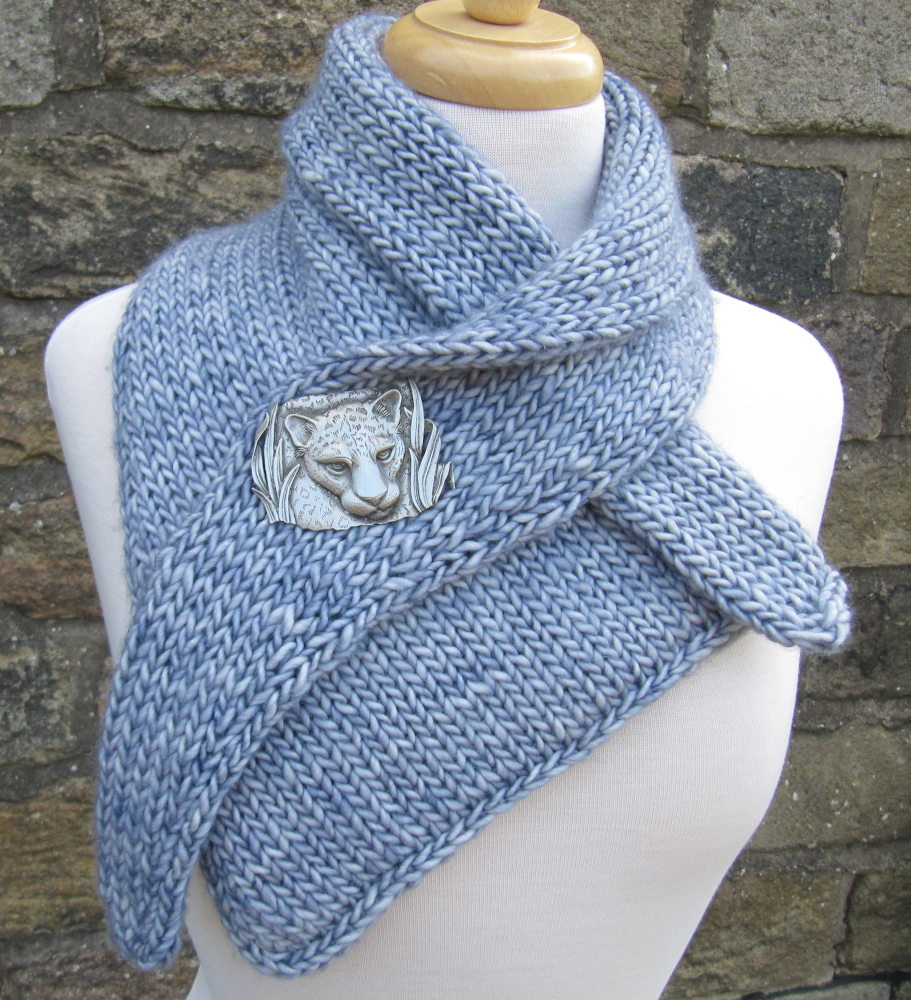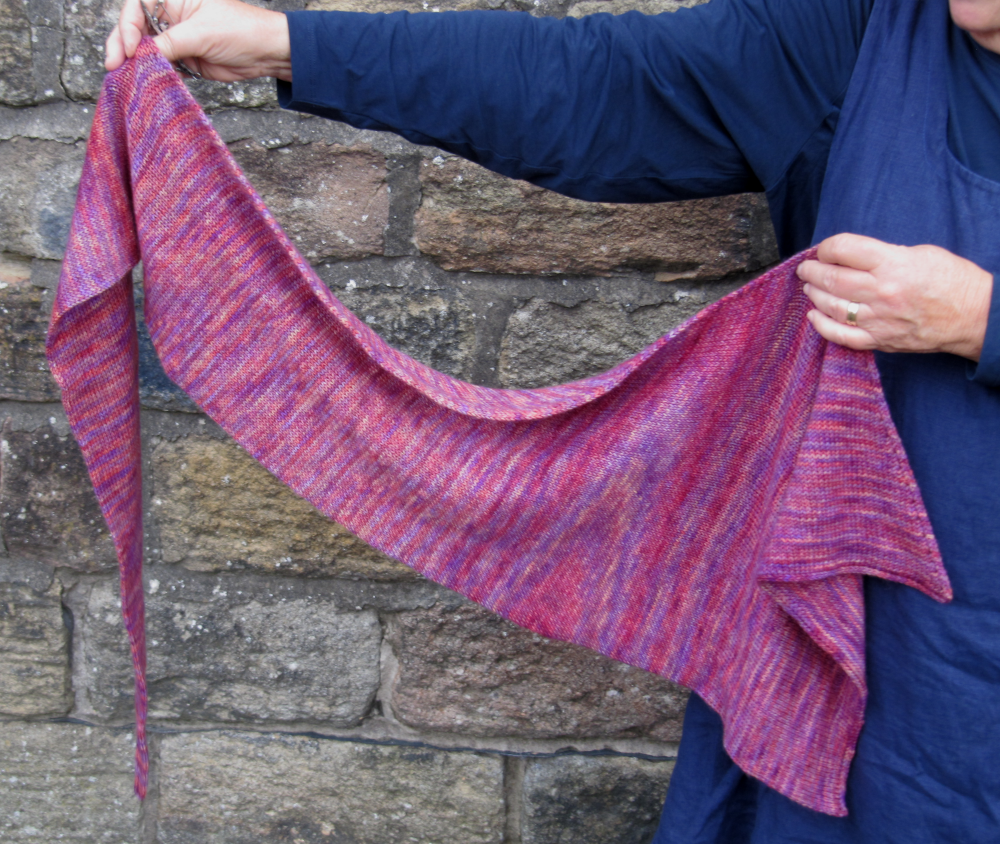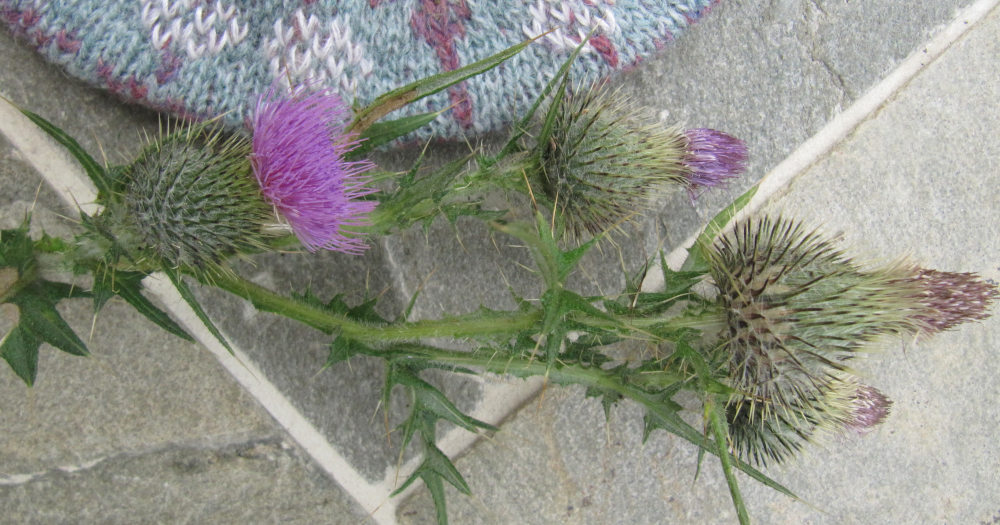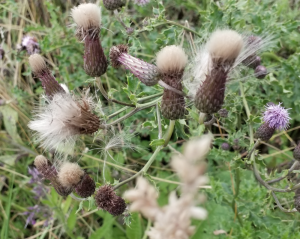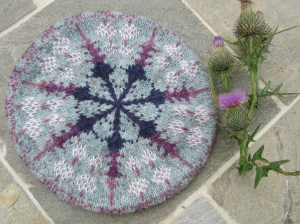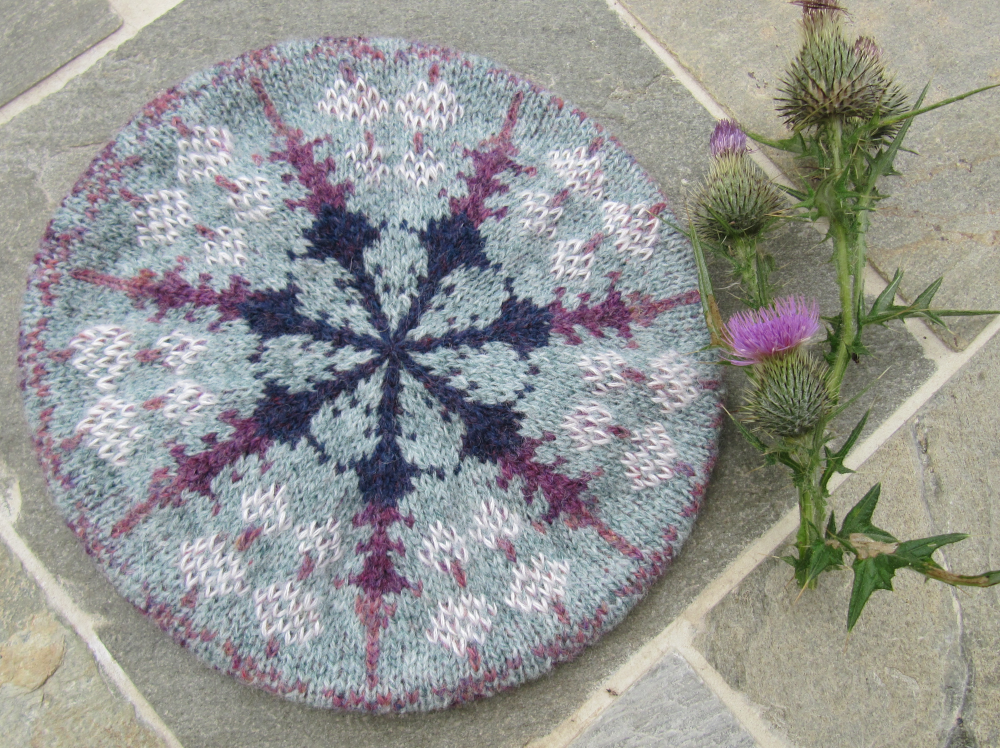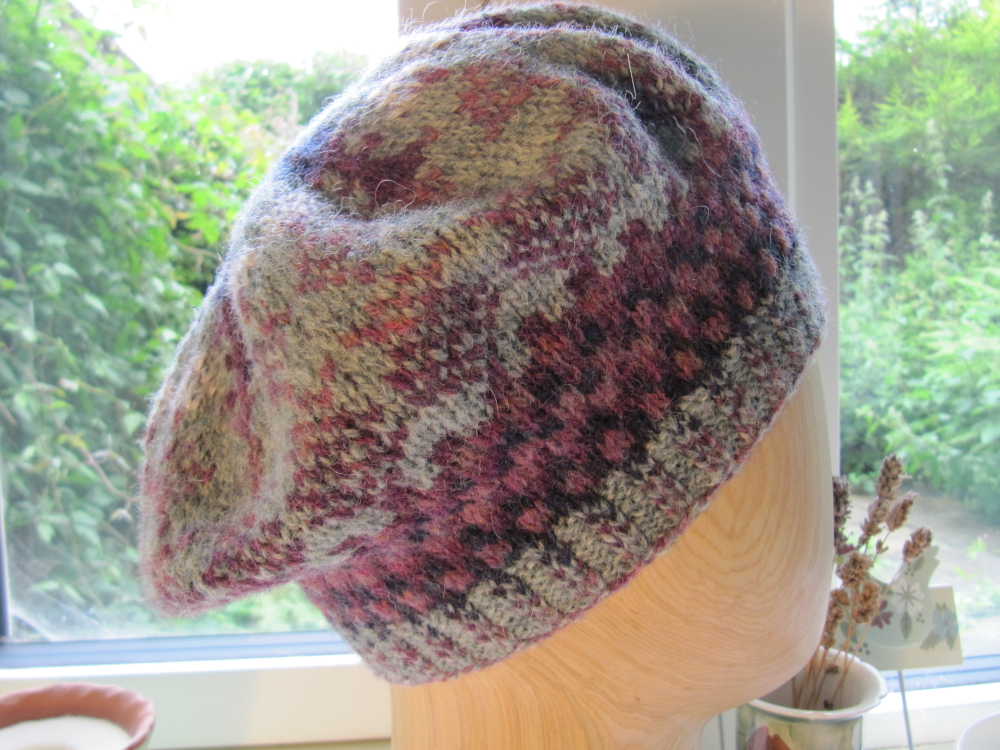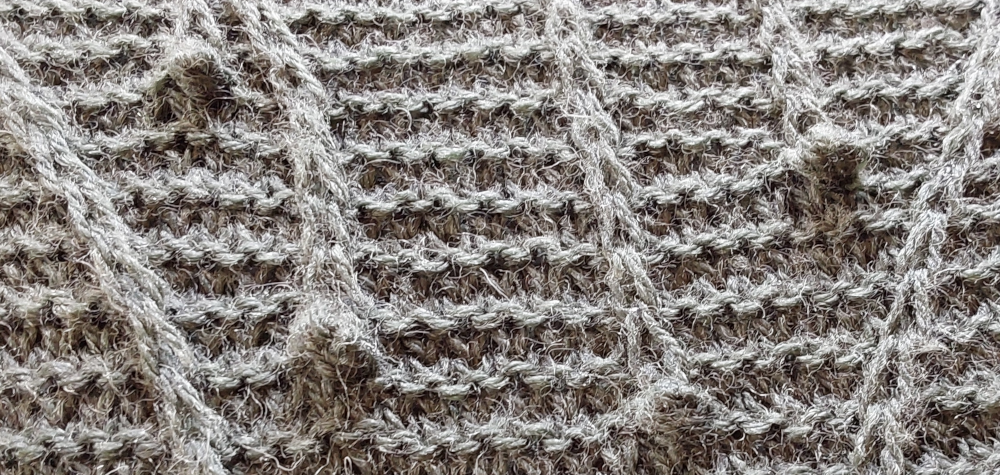Ostara is the fourth festival in the Wheel of the Year. It falls on the Northern Hemisphere’s Spring Equinox, 20th March, and is also the celebration of Oestre, the goddess of fertility. Spring has arrived in the UK, leaves have appeared on many trees and shrubs, and daffodils are nodding in Spring breezes.
Ostara the shawl begins at the bottom left hand angle of a square and increases along the diagonal, the hypotenuse, with two halves of very different patterning, reflecting the equality of night and day. As it slowly grows, the leaves emerge along one edge and flowers begin to dot one half of the shawl. Folded along the centre spine it forms a warm layered shawl, opened out it becomes a lighter airy accessory for sunnier Spring days. I have chosen a lovely blend of wool and silk for this shawl, in a vibrant Spring green. Ostara can be blocked as a square, a rectangle, or a parallelogram. It can be worn in several ways: folded as a triangle along the diagonal centre stitch to show the flower side or the garter side; folded as a triangle across the diagonal to show one half flowers and one half garter; folded across the middle to make a narrower rectangle.
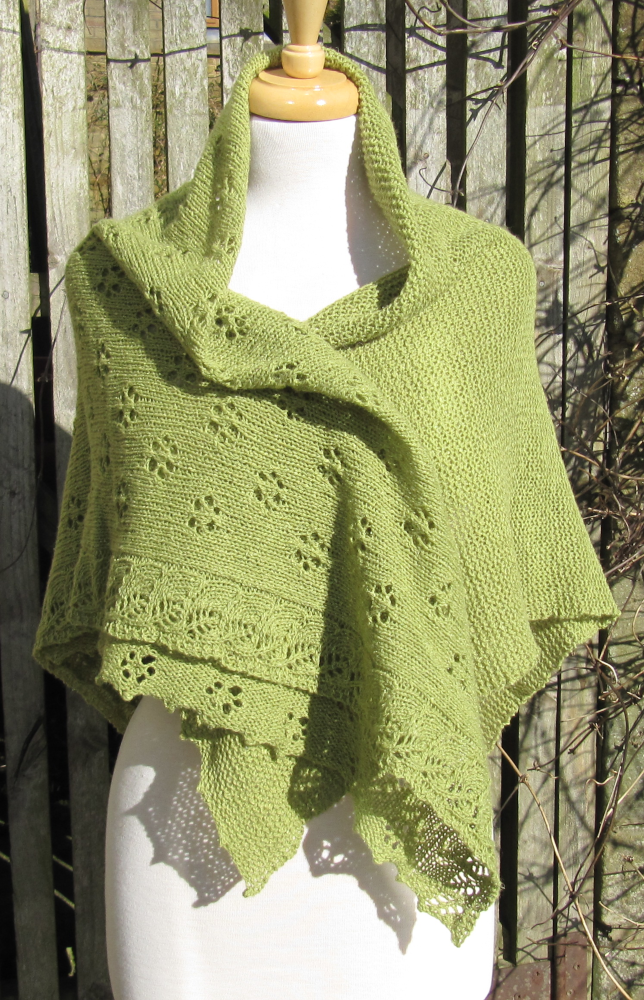
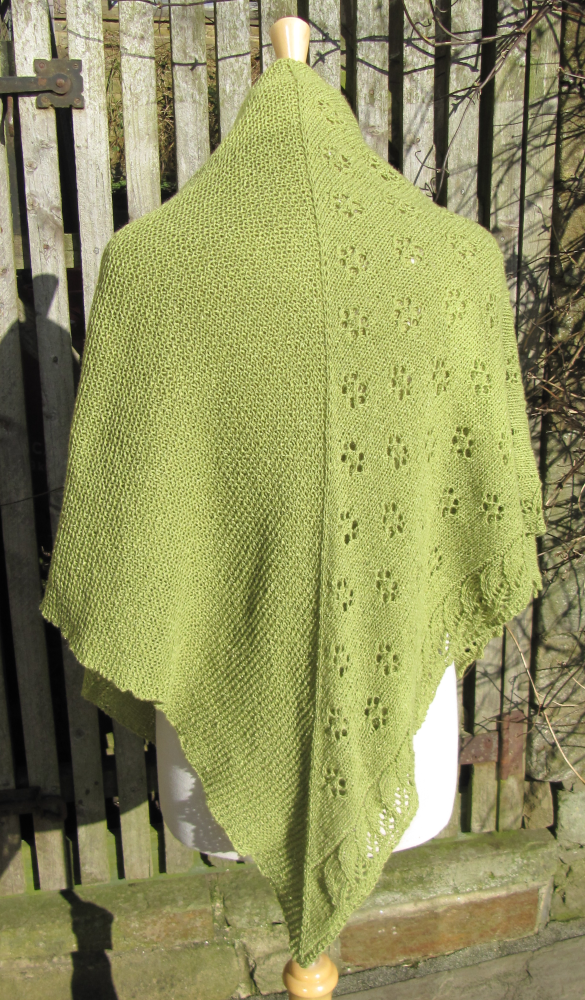
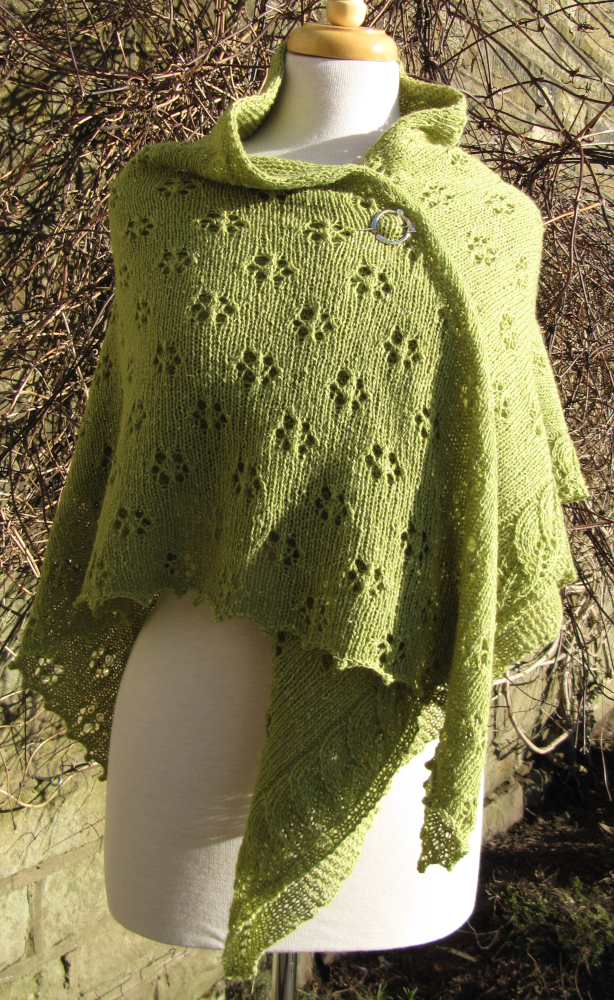
Ostara is an adaptable shawl, can be made to any size you choose, from a small square to a large enveloping folded triangle. Size is adjusted by repeating the main 24-row pattern; the sample shown, for instance, consists of a setup section followed by 11 repeats of the main section, and was blocked into a rectangle to give a shawl 137 cm/54 ¾” x 115 cm / 46”.
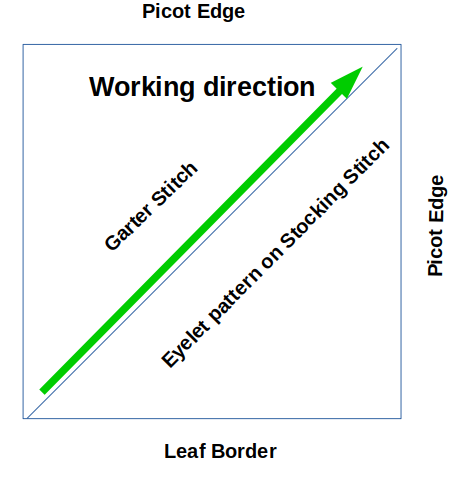
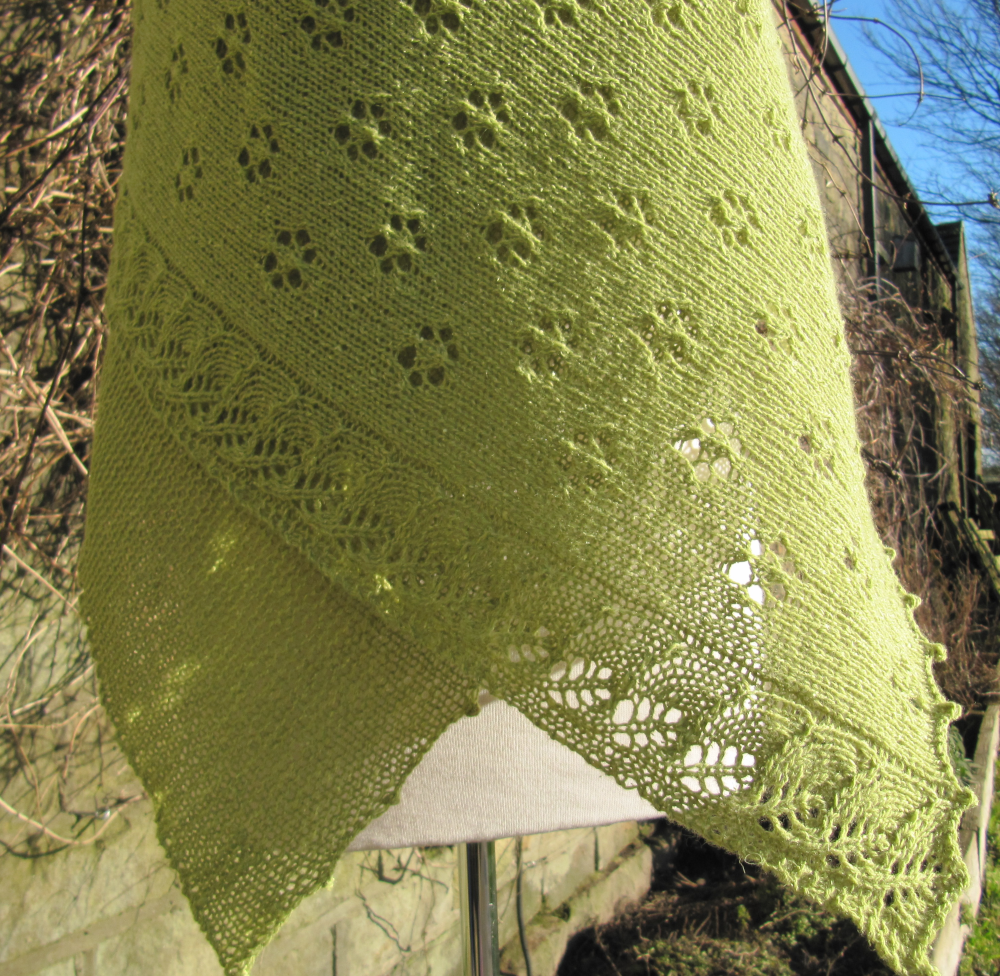
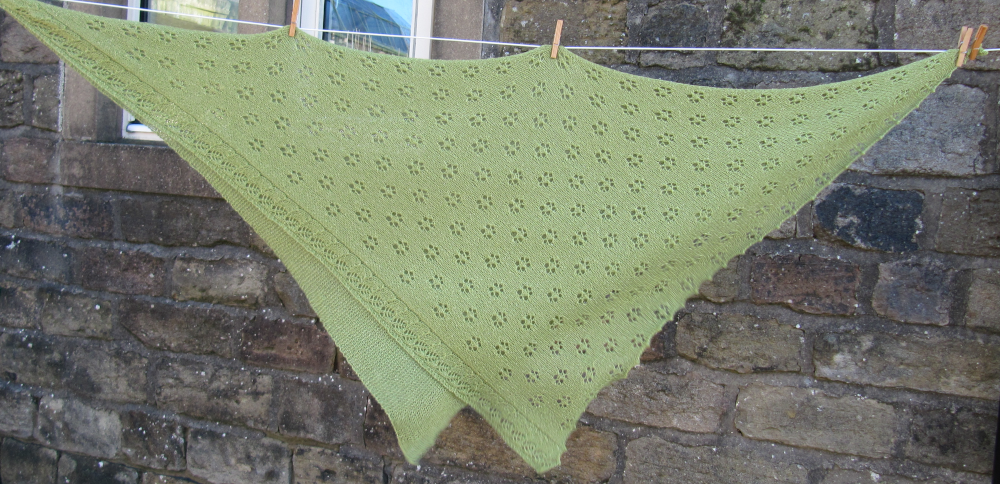
This construction lends itself readily to adaptation, and I have included, as a separate file, a lapghan pattern of the same construction but knit at a large gauge in bulky wool.
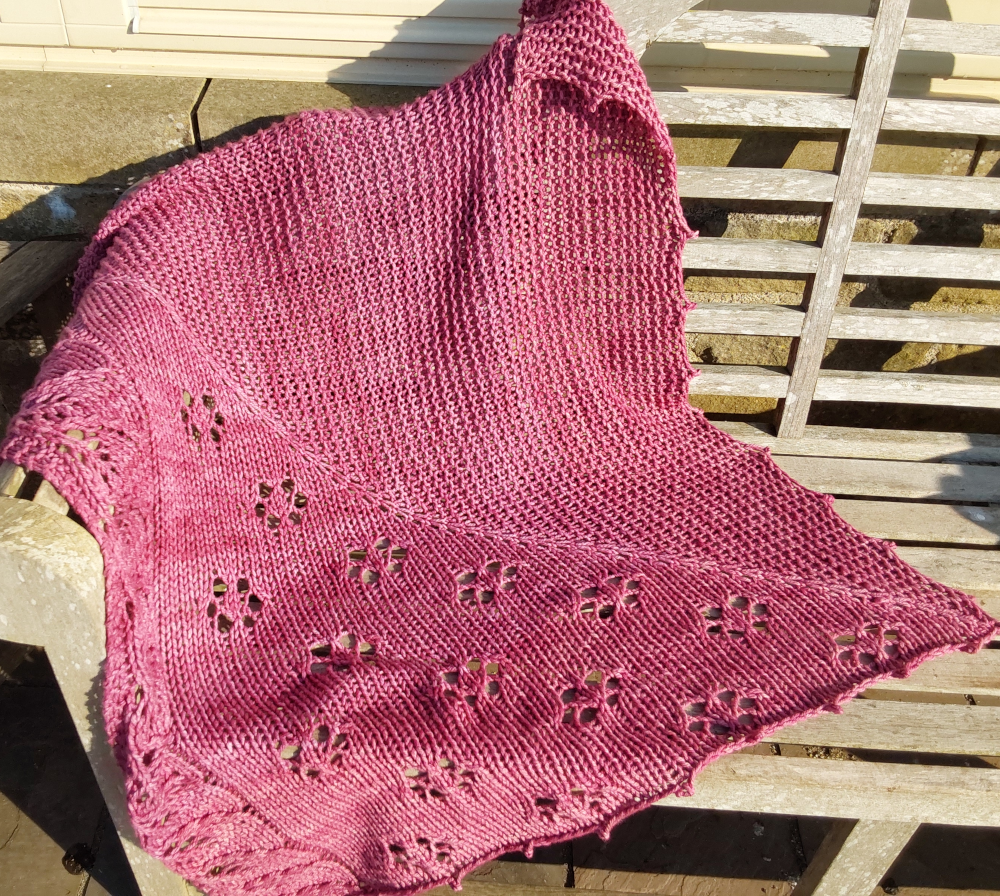
This pattern has been fully professionally tech edited, but has not been test knit except by me. Full pattern support is available by email.
Ostara is available to buy in the Granary Knits Payhip Store and Ravelry Store.
